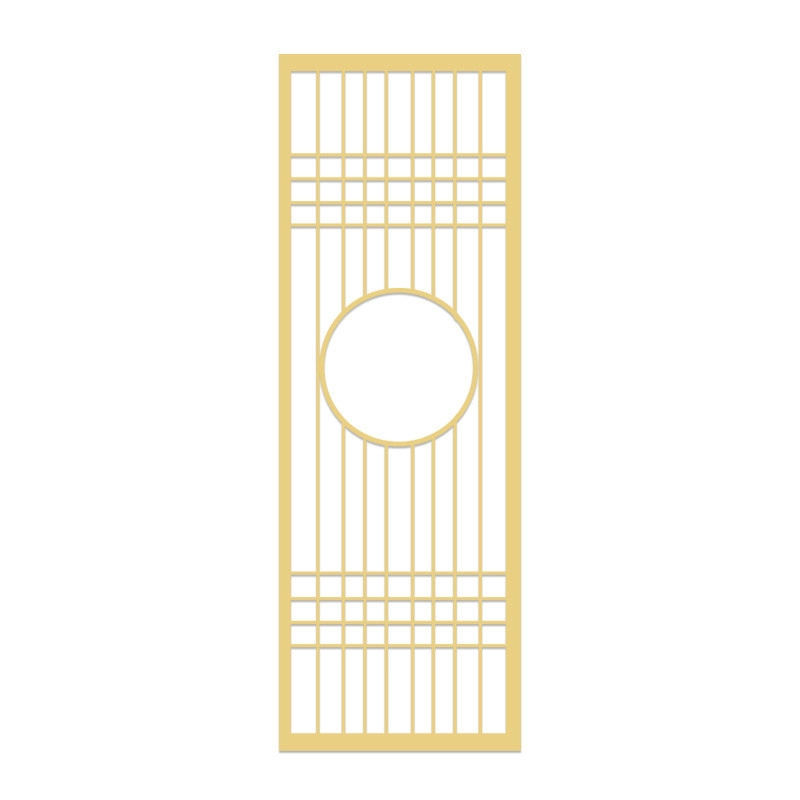Decorative Metal Panels: 5 Must-Know Design Secrets for Walls!

Transform Your Spaces with Decorative Metal Panels: 5 Design Secrets Unveiled
Why Walls Demand More Than Just Paint
Architects and designers constantly face the challenge of balancing aesthetics with functionality in wall treatments. Traditional materials like paint or wallpaper often lack durability, especially in high-traffic commercial spaces or moisture-prone areas. Clients increasingly demand solutions combining artistic expression with practical performance—sound control, easy maintenance, and structural longevity. This is precisely where decorative metal panels shine as a transformative alternative, offering unparalleled design versatility alongside tangible technical benefits.
The Modern Solution: Beyond Basic Metal
Modern decorative metal panels are light-years ahead of old-school corrugated sheets. Advanced manufacturing allows intricate laser-cut patterns, dimensional textures, and even photo-realistic perforated imagery. Aluminum-magnesium alloys, widely used in building facades, offer strengths up to 300 MPa while weighing only one-third as much as steel—a game-changer for retrofits or complex installations :cite[8]. Their inherent corrosion resistance and compatibility with coatings like PVDF fluorocarbon paint (lasting 20+ years outdoors) make them ideal for both interior feature walls and striking exterior cladding :cite[8].
Interestingly, these panels solve acoustics issues too. Perforated metal panels with sound-absorbing backings, like those used in Shanghai Tower’s lobby, reduce noise reverberation significantly while creating visual drama :cite[7].
Choosing Your Perfect Panel: Types & Applications
| Panel Type | Best For | Unique Advantages | Real-World Example |
|---|---|---|---|
| Laser-Cut Panels | Room dividers, artistic screens | Precision patterns, limitless customization | Zahner ImageWall® celebrity portraits :cite[3] |
| Perforated Panels | Facades, acoustic ceilings | Light diffusion, ventilation, sound control | Shanghai Tower’s wave-patterned walls :cite[7] |
| Textured/3D Panels | Feature walls, lobby accents | Tactile depth, shadow play | Embossed aluminum “stucco” finishes :cite[8] |
| Recycled Metal Panels | Sustainable interiors, industrial lofts | Eco-appeal, rustic character | Upcycled factory metal in loft apartments :cite[6] |
Your 5-Step Success Blueprint
Step 1: Define Function & Location
Is this an exterior rain screen requiring weather resistance? An interior partition needing sound absorption? Nail down performance needs first. Exteriors demand corrosion-resistant alloys like aluminum-magnesium (Grade 3000 series), while interiors allow creative reuse of weathered steel or copper :cite[8].
Step 2: Select Material & Finish
Choose based on budget and environment. Aluminum offers lightweight affordability (~20% cheaper than bronze alloys). For high-end luxury, consider patinated copper or bronze. Powder-coated finishes provide color consistency, while anodized metals deliver metallic luster.
Step 3: Leverage Customization
This is where decorative metal panels truly excel. Suppliers like CNC Lathe Parts can translate vector artwork or even photos into panel designs. Pro tip: Simplify complex images to high-contrast silhouettes for cleaner laser-cutting results.
Step 4: Engineer Mounting & Structure
Heavy panels (>15kg/m²) need reinforced framing. Curved installations, like Shanghai Tower’s wave walls, require precision digital modeling of substructures before fabrication :cite[7]. Always consult your supplier’s engineering team early!
Step 5: Install with Precision Gaps
Allow for thermal expansion—metal moves! Gaps of 3-5mm between panels prevent buckling. Use concealed clips or stand-off brackets for a floating effect. Our 2025 hotel project in Seattle learned the hard way: skimping on gap allowance caused summer warping on a south-facing facade.
Critical Mistakes to Sidestep
Warning: Never neglect substrate prep!
Installing panels over warped framing guarantees wavy, uneven surfaces. Similarly, placing perforated panels directly against insulation without air gaps cripples drainage and acoustics. Always include a vented rain screen layer for exteriors.
Avoid DIY shortcuts in structural connections. One collapsed art installation we assessed used self-tapping screws into thin aluminum—they sheared off under wind load within 6 months.
Installation Prep Checklist
- ☑ Confirmed load capacity of wall structure/subframe
- ☑ Verified panel thickness matches wind/snow loads (exteriors)
- ☑ Ordered 10% extra material for waste/corrections
- ☑ Specified expansion joint spacing per engineering drawings
- ☑ Scheduled professional installers with metal-panel experience
- ☑ Planned post-install cleaning/maintenance access
FAQs: Quick Answers to Common Queries
Q: Are decorative metal panels expensive?
A: Costs vary widely. Simple perforated aluminum starts at ~$50/m², while custom laser-cut bronze art panels can exceed $500/m². However, their 30+ year lifespan often makes them cheaper long-term than repainting or replacing inferior materials.
Q: Can I use these in humid areas like bathrooms?
A: Absolutely! Aluminum or stainless steel panels with powder-coated finishes resist moisture and mold. Avoid untreated steel to prevent rust.
Q: How do I clean interior metal feature walls?
A: Dust regularly with a microfiber cloth. For fingerprints, use mild soap + water. Avoid abrasive cleaners that could scratch coatings.
Q: Can they improve building energy efficiency?
A: Yes. Insulated metal sandwich panels (like 16mm PU foam cores) provide thermal R-values up to R-6 per inch, drastically reducing HVAC loads :cite[2].
Q: Is custom design really achievable?
A: Shockingly yes. Advanced suppliers digitize designs into CNC or laser files. One client even transformed a child’s sketch into a nursery room divider!









